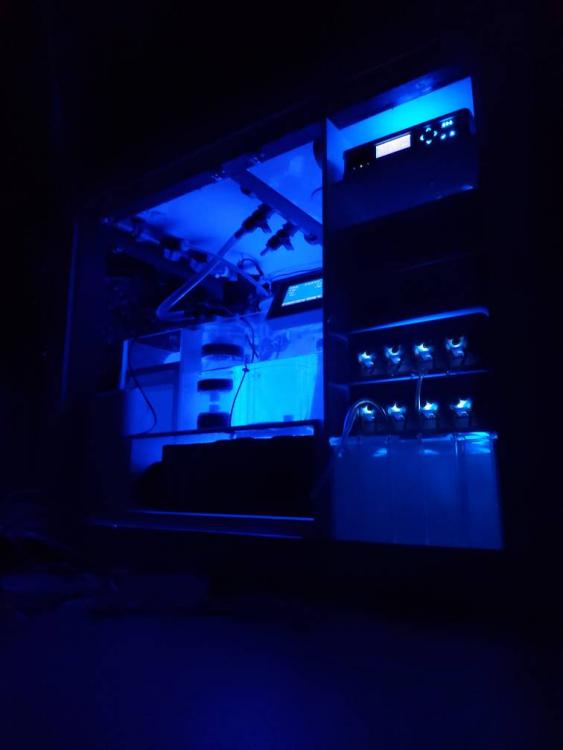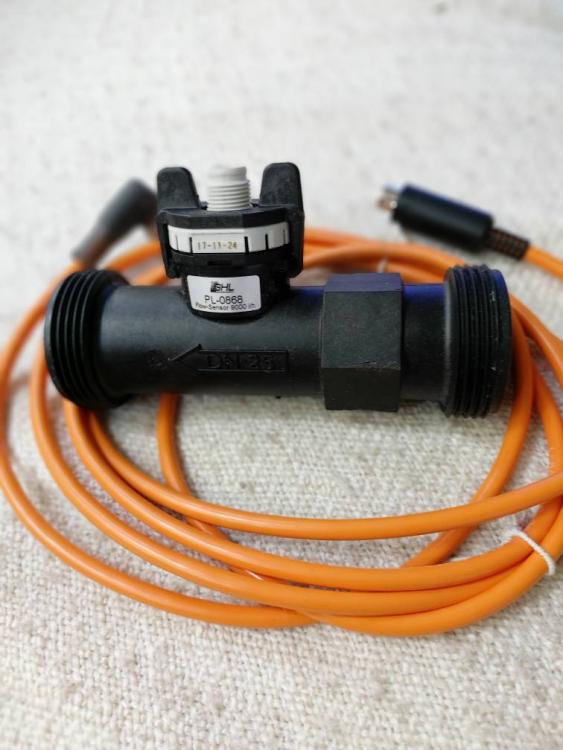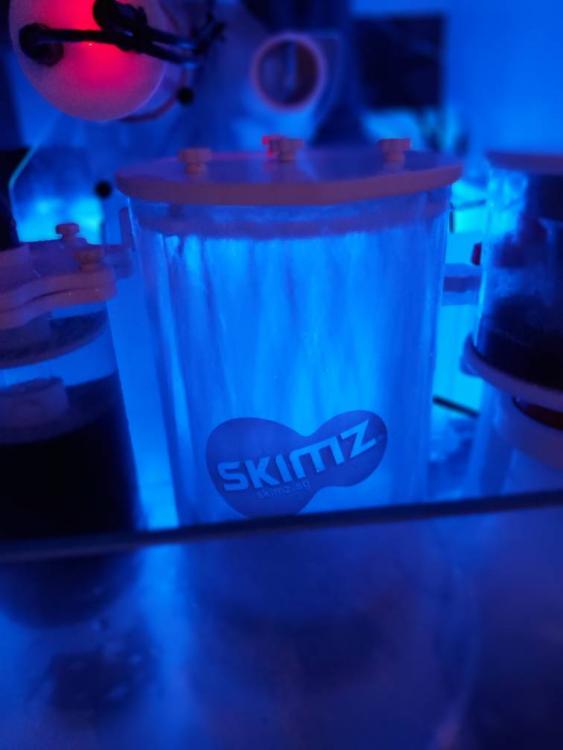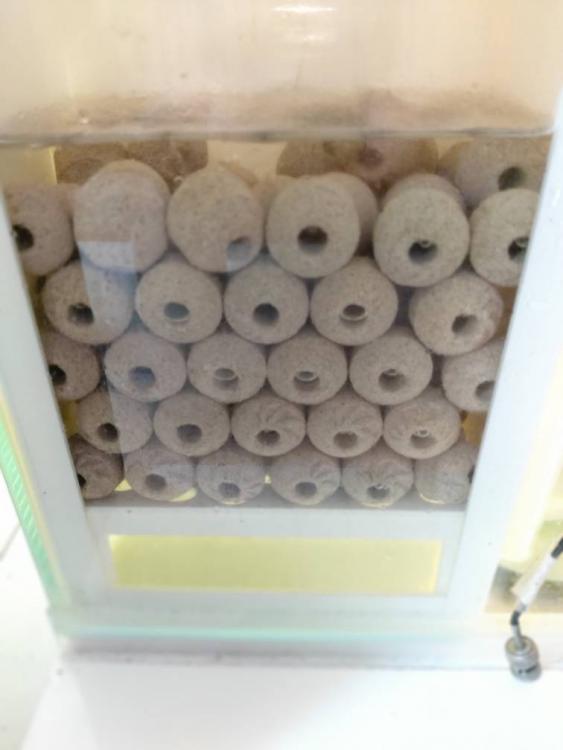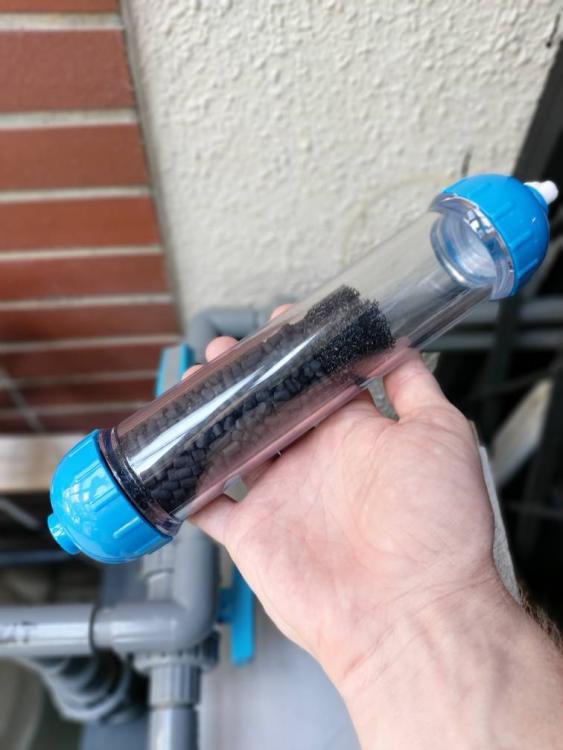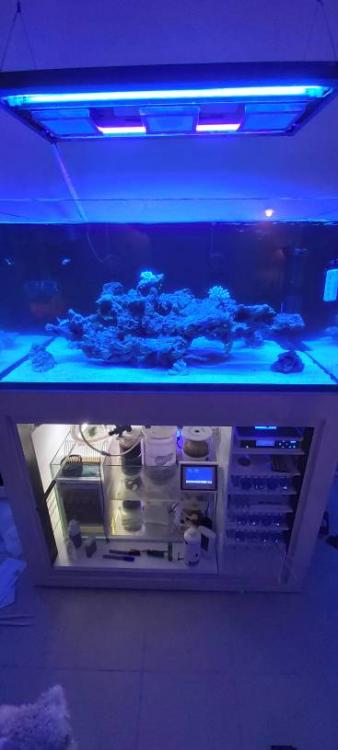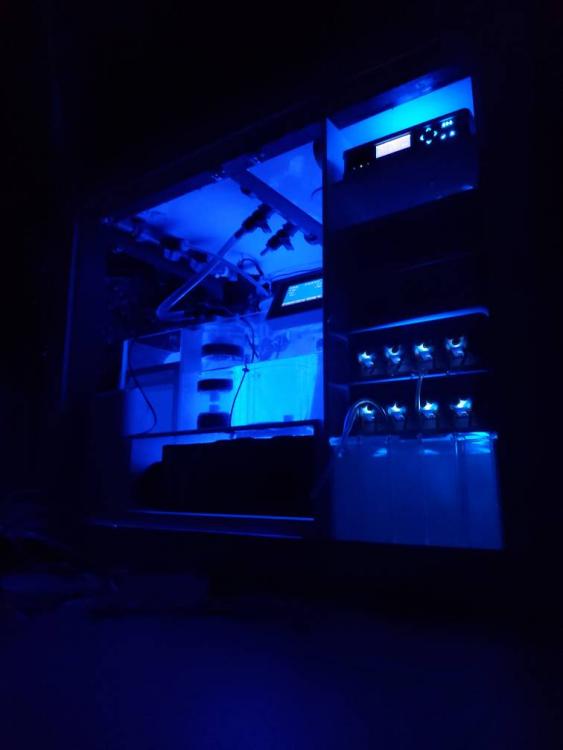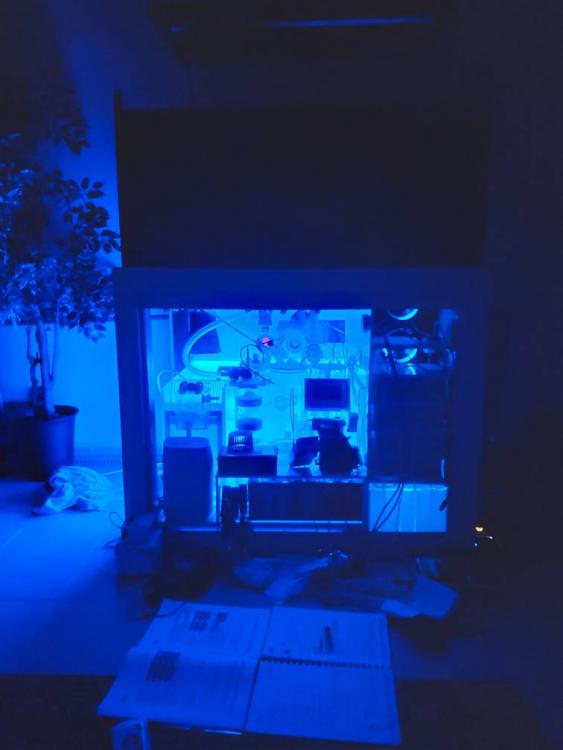Leaderboard
Popular Content
Showing content with the highest reputation on 05/19/2020 in all areas
-
Hi. Welcome to my little box of water build thread. Over the next few posts I am going to go into some detail about my system setup and the choices I made. I hope you find it useful, not just to see what goes into a reef tank, but also the reasoning behind why I selected what I did. So first off some background, I have been reefing for 8+ years and I am just about to 'start' my fourth tank. It is a 510L system (sump, tank and connected mini 40L frag-tank). The main display is 42 inches (107cm) by 30 inches (76cm) and is 20 inches (50cm) high. It isn't a massive display tank, but with a good height and depth I hope to do something interesting with. The aim is an SPS dominated system with a semi-minimalist rockscape creating some negative space for the fish the actively swim in and to provide some room for a few clams and LPS islands. So, when I say i am about to 'start' that isn't technically correct as the tank is actually already setup and has been 'cycling' for nearly 10 weeks now (The aim is to follow WWC's 16 week initial cycle). I hope to bring everything I learnt from my previous success and failures in the hobby. What is so awesome about keeping a little bit of the ocean within our homes or offices is that the hobby is always moving forward always changing. As technology and knowledge improve it is getting easier to succeed, so with my new setup I see it as a great opportunity to use the latest tools and techniques. I also see this tank as a testbed for some ideas I have around automation. My idea of a low maintenance tank is one that uses te technology to run itself. What I have learnt in the hobby is that you need to make good decisions on your tank. They ultimately save you money. Yes, there are normal constraints like budget or size or even knowhow, but I managed to scrape together some interesting tools and it didn't cost the earth either. Luckily knowledge is something that is free. So I decided to write out a set of objectives for the tank and plan accordingly. Tank Objective: To design a tank that is easy to maintain and uses various systems and tools to run itself with minimal intervention (as I am not always around to look after it). To improve my chances of success it should be a controllable, stable, pest free, ultra low nutrient tank. The tank should be stocked with attractive corals and interesting utilitarian fish and invertebrates. In the next post I will go into some detail about how I planned to achieve this... Sent from Singapore Reef Club mobile app1 point
-
I opted to run my system’s water temperature in the mid 27 (degree celsius) ranges, with the max hitting 28.0 degrees. Two reasons for this: 1. Main reason being to ameliorate large temperature swings in the event of an extended power outage or chiller failure and I need some time to get everything running again. 2. I’m running a system with a fairly large water volume for a home aquarium of approx. 1,200 litres on a 1hp chiller. I had to compensate for the reduced efficiency that wouldn’t be able to hold up punching above its weight in terms of chilling the water to temperatures more than 2 degrees lower than the ambient temperature, particularly given our typically hot climate. I’ve also gotten used to reading the temperature a la fahrenheit, as I find it more attuned when monitoring a smaller temperature range. While I plan to upgrade to a better unit in the future, I have no qualms with the chiller I’m using now in tandem with an external thermostat. This external temperature controller with its own probe allows me to adjust more precisely at what temperature I want my chiller to kick on and off. The main benefit of this is I can more closely tweak the temperature range of my system for better stability, for e.g. having less than half a degree celsius’ worth of difference in between the chiller cooling the tank and shut-off periods. Currently, I’ve calibrated it to switch the chiller on when the probe reads 27.5 degrees celsius on its display panel. I set it to kick on with a temperature difference of only 0.3 degrees celsius, and going by these settings, the chiller kicks in on average every 50mins~1h20mins depending on the ambient temperature/time of day(also influenced by my light schedule ramping up and down, max intensity etc). It usually takes between 20-25mins to cool 0.3 degrees, which is acceptable to me considering the large overall water volume in my system. The controller also allows me the customisability of a delay time between switching the chiller on and it kicking in, which I’ve set for 60seconds. Sent from Singapore Reef Club mobile app1 point
-
1 point
-
really depends on your stocking level and whether your system has a high or low bioload. IME running too many nutrient export options over time might cause a major die-off of one type of algae while another monopolizes most of the nutrient intake. also have to factor in how mature your system is. the older it is generally the less of a need to run both an ATS and refugium together IMO. saves on the lighting cost too. Sent from Singapore Reef Club mobile app1 point
-
I like the minimalist approach. Loads of negative space allowing fish and corals room to grow, and allowing for access to the corals for husbandry. Placed away from back and has a small footprints allowing loads of flow around the tank and corals. Slight variation in height within each scape allowing for different corals to grow out but not shade out one another too badly. Fish friendly as has places to hide (although maybe too minimal if you have loads of tangs, as they can still see one another so think about stocking and order of placement). Most of rockscape is around 50% of tank height allowing for growth. If anything you could shave off an inch. But that is just being hypercritcal, overall is really really good. Looking forward to seeing the new tank mature out. Good luck. Sent from Singapore Reef Club mobile app1 point
-
doubt it’s a matter of temperature. i would avoid making too many changes if i were you. odds are they will take even longer to re-adjust Sent from Singapore Reef Club mobile app1 point
-
I dropped temperature to 25.5 from the earlier 26 degrees Would that have made a difference and acan not opening ? Sent from Singapore Reef Club mobile app1 point
-
probably the new light having a different spectrum/wavelength variation from your older one. just leave the light settings consistent on your new one, if they’re healthy and your parameters are stable it should extend again in a week or two Sent from Singapore Reef Club mobile app1 point
-
Objective 4: Ultra Low Nutrients (part 2) 5. FLOW: in my view one of the most important parts of a low nutrient system. I plan on having a lot of flow in the right place. Consistent flow into the tank is achieved via two return pumps that are connected to flow meters. The flow meters allow you to see not only the volume but also to detect any slowing over time. Is amazing that my old 6000 L/Hr pump on full blast only gives me 1020 L/HR at the return nozzle! Head pressure and restrictions are clearly something you need to consider when you buy a pump for your tank. The flow meters are great tools, as they allow me to monitor any reduction in flow overtime, thus, indicating when I need to maintain the pump. I simply place alarms on the system to indicate if the flow is too low. The GHL flow meters have no moving parts unlike their Apex equivalent so they don't deteriorate overtime, nor need their own maintenance to ensure accurate measurement. The plan is to get the control system to make adjustments to the pumps automatically to maintain flow (however I don't think I can do that with the pumps I have.... hmmmm maybe time to get a M3 when it comes out hehehe). I also flush the lines into the tank, simply by switching off the return on a regular basis. The backward pressure helps keeps the return lines clearer. The flow I have is aimed at maintaining a 4x turnover in the sump and 100x flow within the tank. The Tank flow is served by 2x MP40s on each side of the tank, along with 2xSLW20's which are placed on the back wall (which I will move to MP10's in the future... I here there are new MP's coming out soon!). I will also add a Gyre shortly, most likely to the back wall aswell given the depth of the tank, and as such I am thinking about the new Red Sea 45 simply as they are easy to maintain. 6. ZEOVIT REACTOR: The skimz zeovit reactor has auto flushing capability making it ideal for my low maintenance objectives. Use smaller model as it covers the flow rate needed upto 900L tank. Love this little toy. 7. BIO MEDIA: Installing bio media is beneficial, however it needs to be placed in flow areas that allows for the water to be in contact with beneficial bacteria. Placing the media in low flow areas is doing little more than producing a nitrate magnet. As I built a section of the sump to house the media (as well as having bio bricks in other areas) 8. SKIMMER: You may wonder why this is lower down on my list of essential tools for combating nitrites. Well, on my system this is because of the roller mat, refugium and ATS. Given the bioload actually reaching the skimmer there was not enough organics for the bubbles to properly hold their form, as such i had loads of micro-bubbles and hardly any skimmate irrespective of how I control the air flow, water input and water height. The skimmer I had was rated for a tank upto 1500L so much bigger then my system, reducing it down to a skimmer that is rated for my system has improved the skimmers performance. One of the only cases in the hobby where bigger equipment is worse haha. I currently have a tiny Curve 5, which I have to say that it is cracking good skimmer. It has a air hose leading outside to a carbon filter. The filter is made out of a simple DI replacement canister and was placed on the end of the air tube to reduce any impact of pollution such as when they fog for mosquitos and I forget to disconnect the hose inside. There are a still a few more tools available to help reduce nitrates and phosphates so will cover the final ones next post. Until then, happy reefing! Sent from Singapore Reef Club mobile app1 point
-
how long they stayed closed? mine also closed for 2-3 days without any reason then suddenly ok.. any shrimps irritating it? Sent from Singapore Reef Club mobile app1 point
-
1 point


